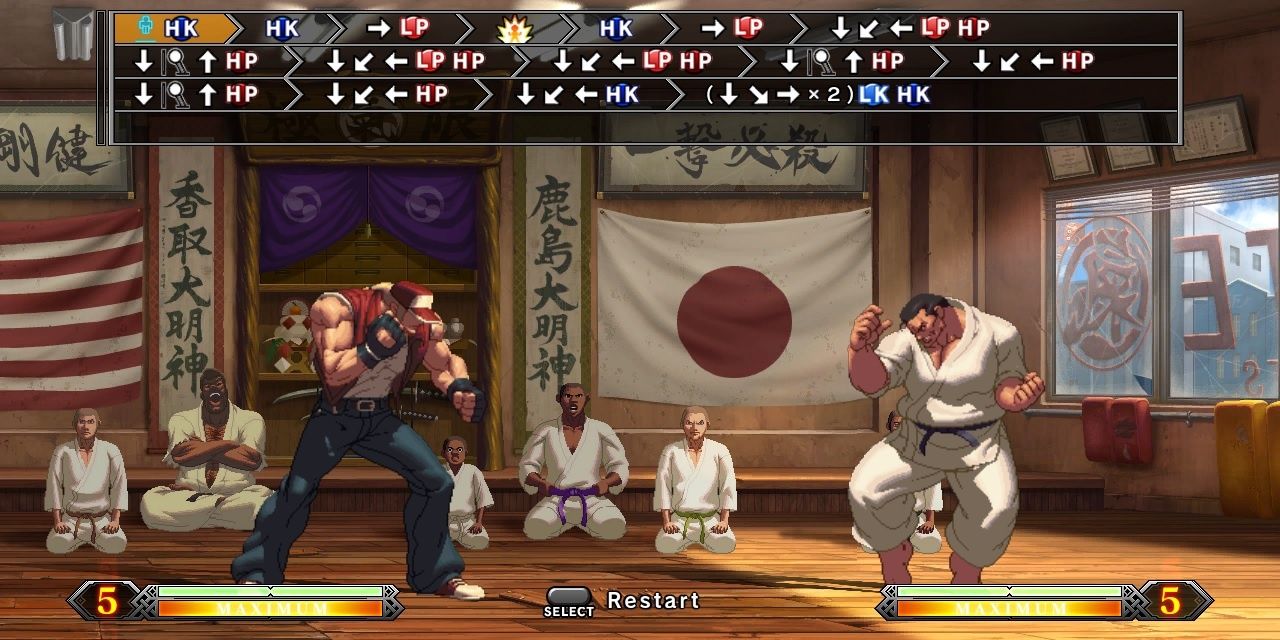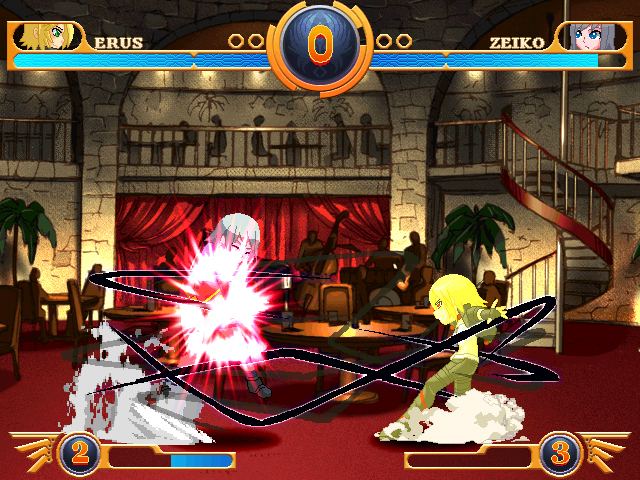
The Symphony of Strikes: Deconstructing the Art of Combo-Based Fighting Games
For decades, fighting games have captivated players with their blend of strategic thinking, lightning-fast reflexes, and the primal thrill of one-on-one combat. While the genre has evolved in numerous ways, from 3D arenas to tag-team battles, one element remains a core pillar of the experience: the combo. In combo-based fighting games, chaining together a sequence of attacks into a single, devastating flurry is not just an option; it’s often the key to victory. This article delves into the intricacies of combo-based fighting games, exploring their history, mechanics, appeal, and impact on the genre as a whole.
A History Rooted in Innovation:
The origins of the combo system can be traced back to early fighting games, but it was Capcom’s groundbreaking Street Fighter II (1991) that truly popularized the concept. While unintended by the developers, players discovered that specific sequences of attacks could be linked together, creating continuous damage strings. This accidental innovation became a defining characteristic of the game and ignited a revolution in fighting game design.
Following Street Fighter II’s success, developers actively embraced the combo system, building their games around its potential. Mortal Kombat (1992) took the concept further with its brutal, cinematic fatalities and longer, more complex combos. Killer Instinct (1994) introduced the "combo breaker" mechanic, allowing players to interrupt their opponent’s onslaught and adding a layer of mind games and risk-reward decision-making.
Throughout the 1990s, combo-based fighting games flourished. The King of Fighters series introduced team-based battles and a wide roster of characters, each with unique combo potential. Tekken transitioned fighting games into the 3D realm while retaining a strong emphasis on complex and rewarding combo systems. This period saw a constant evolution of combo mechanics, with developers experimenting with different input methods, timing windows, and special properties to create increasingly intricate and satisfying gameplay experiences.
The Mechanics of Mayhem: Dissecting the Combo System:
At its core, a combo in a fighting game is a sequence of attacks that connects without allowing the opponent a chance to block or counter. This is achieved through specific properties and mechanics:
- Hitstun: When an attack lands, it inflicts a period of "hitstun" on the opponent, rendering them temporarily unable to act. The length of hitstun varies depending on the attack, and is crucial for linking attacks together.
- Launchers and Knockdowns: Certain attacks, such as uppercuts or sweeps, can launch an opponent into the air or knock them down. These attacks often serve as combo starters, allowing players to continue their assault in the air or as the opponent recovers.
- Cancel Windows: Some attacks allow players to "cancel" their animation by immediately inputting another attack. This allows for faster and more fluid combo transitions.
- Juggles: In many games, launched opponents can be "juggled" in the air, meaning they can be repeatedly hit before they hit the ground. Juggle combos often require precise timing and execution to maintain the juggle and maximize damage.
- Command Normals and Specials: Combos typically involve a combination of normal attacks (punches and kicks) and special moves, which are executed with specific directional inputs and button presses. Mastering the input commands and understanding the properties of each move is essential for building effective combos.
- Meter Management: Many modern fighting games utilize a "meter" system, where players build up resources through attacking and defending. This meter can then be used to enhance special moves, perform super attacks, or extend combos.
The complexity of a combo system can vary greatly from game to game. Some games focus on relatively simple combos with easy-to-learn inputs, while others feature incredibly intricate and demanding combos that require hours of practice to master. The depth and complexity of the combo system often contribute significantly to the game’s overall skill ceiling and competitive potential.
The Allure of the Chain: Why Combos Captivate Players:
The appeal of combo-based fighting games stems from a variety of factors:
- Sense of Mastery: Successfully executing a complex combo provides a profound sense of accomplishment and mastery. It requires practice, dedication, and a deep understanding of the game’s mechanics.
- Strategic Depth: Combos are not just about memorizing button sequences. They require strategic thinking and adaptation. Players must learn to identify opportunities for combos, react to their opponent’s actions, and adjust their strategies accordingly.
- Expressive Gameplay: Combos allow players to express their individual style and creativity. By experimenting with different move combinations and strategies, players can develop unique and personalized playstyles.
- Visual Spectacle: Watching a well-executed combo is often a visually stunning experience. The rapid-fire attacks, flashy special effects, and devastating damage output create a sense of excitement and awe.
- Competitive Edge: In competitive fighting games, mastering combos is essential for achieving victory. The ability to consistently land long and damaging combos can give players a significant advantage over their opponents.
- The Thrill of the Comeback: Knowing that a single well-timed combo can turn the tide of battle adds a layer of tension and excitement to every match. The possibility of a dramatic comeback keeps players engaged and motivated to fight until the very end.
The Impact on the Genre: For Better or Worse?
The rise of combo-based fighting games has had a profound impact on the genre, shaping its evolution in both positive and negative ways:
Positive Impacts:
- Increased Depth and Complexity: Combo systems have added a significant layer of depth and complexity to fighting games, rewarding skillful execution and strategic thinking.
- Enhanced Replayability: The vast possibilities for combo experimentation and optimization have contributed to the long-term replayability of many fighting games.
- Competitive Scene Growth: Combo-based fighting games have fostered a thriving competitive scene, with tournaments and events held around the world.
- Innovation in Game Design: The constant pursuit of new and innovative combo mechanics has driven innovation in fighting game design, leading to the development of new gameplay systems and features.
Negative Impacts:
- Difficulty Curve: The complexity of combo systems can be daunting for new players, making it difficult for them to get into the genre.
- Execution Barrier: Mastering complex combos requires significant practice and dedication, which can be a barrier to entry for casual players.
- Emphasis on Memorization: Some argue that combo-based fighting games place too much emphasis on memorization, rather than strategic thinking and adaptation.
- Combo-Dependent Gameplay: In some games, the entire gameplay revolves around landing and executing combos, which can lead to repetitive and predictable matches.
- Balance Issues: Balancing the power and effectiveness of different combos can be a challenging task, and imbalances can lead to unfair and frustrating gameplay experiences.
The Future of Combos:
Despite the potential drawbacks, the combo system remains a fundamental aspect of many modern fighting games. Developers are constantly exploring new ways to refine and improve the system, addressing the challenges and maximizing its potential. Some trends in the future of combo-based fighting games include:
- Simplified Inputs: Some games are experimenting with simplified input methods for special moves and combos, making them more accessible to new players without sacrificing depth.
- Assist Systems: Assist systems allow players to call in other characters to extend combos or provide support, adding a new layer of strategic complexity.
- Contextual Combos: Some games are introducing contextual combos that are triggered by specific situations or environmental factors, adding variety and unpredictability to the gameplay.
- Focus on Neutral Game: Some developers are shifting the focus away from pure combo execution and towards the "neutral game," which involves spacing, movement, and footsies. This aims to create a more balanced and engaging experience for all players.
- Accessibility Options: Implementing accessibility options like combo assist modes or customizable input mappings can lower the barrier to entry for new players and those with disabilities.
Conclusion:
Combo-based fighting games represent a unique and compelling subgenre within the broader world of fighting games. They offer a blend of strategic depth, skillful execution, and visual spectacle that has captivated players for decades. While the combo system has its challenges, it remains a core element of the fighting game experience, driving innovation and shaping the future of the genre. As developers continue to refine and improve the system, we can expect to see even more creative and engaging combo-based fighting games in the years to come. The symphony of strikes will continue to resonate, captivating audiences with its intricate rhythms and the thrilling dance of combat.

